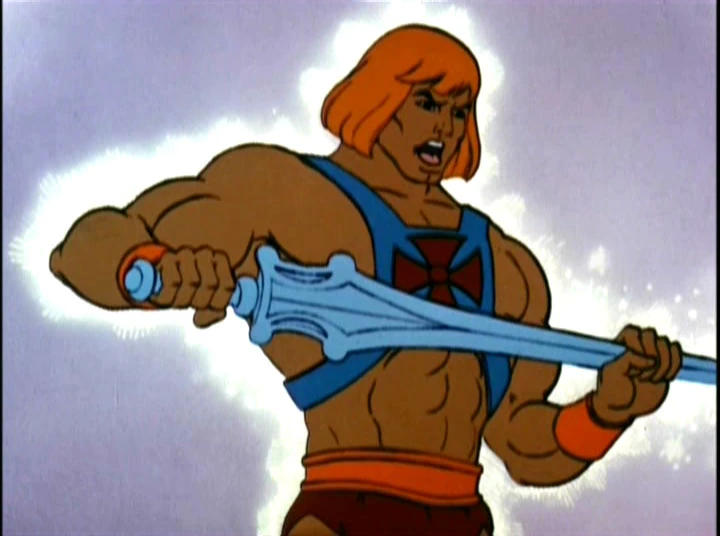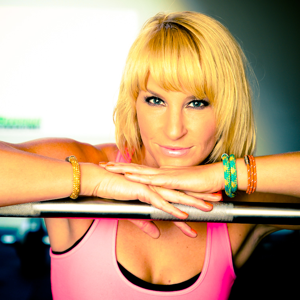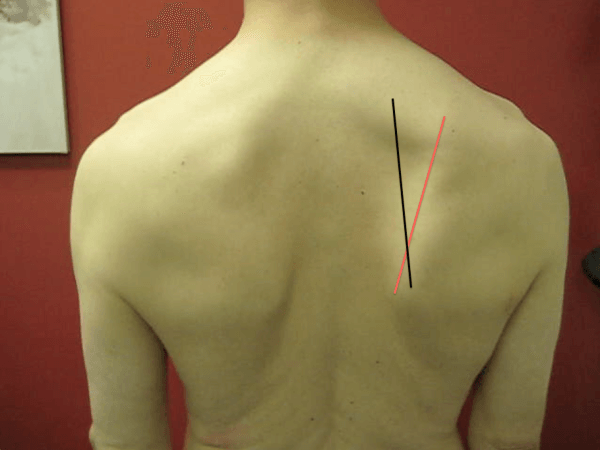I’m still in Europe. Thankfully I have some coaches pinch-hitting for me while I’m away providing some awesome content.
Today I have a great post from Pittsburgh based strength coach and physical therapy student, Michael Mash.
Užívat si (<— Enjoy in Czech)1
What You Need to Know
- With the popularization of core stability training, true rotational movements have erroneously gotten a bad rap.
- Mobility and soft tissue work have done wonders for various populations, but if you’re stretching and mobilizing for an hour before you even start your workout, something’s wrong.
- Squats and deadlifts are fantastic foundational exercises, but they are simply not enough to effectively train the core.
- While it has good intentions, the term “functional training” has recently been abused. Real functional training is actually quite simplistic.
- Evidence-based practice has enhanced the way we view clinical practice and strength training, but it is simply a tool in the toolbox.
Fitness trends act like a pendulum. As soon as the newest idea hits the mainstream and peaks, a group of people who adamantly oppose it return it to the other end of the spectrum. What we can learn from this phenomenon is this: the answer often lies right in the middle.
Core Stability Training
Quite possibly one of the most popular fitness buzz words of the last decade, core stability training has made a huge impact on how we train our midsection for health and performance.
Characterized by learning to properly move at the hips and upper extremities while keeping the spine stable, core stability training can be categorized into different planes of movement.
For example, anti-extension exercises such as the RKC plank, challenge the core’s ability to resist extension, whereas the barbell torque, an anti-rotation exercise, involves moving a barbell from side-to-side while maintaining a rigid core.
The barbell torque, performed with arm movement and a rigid core, is a fantastic anti-rotation exercise.
Popularized by Dr. Stuart McGill, while anti-rotation exercises are fantastic for those in both the rehabilitation and performance worlds, they seem to have been associated with the trend to completely STOP doing rotational core exercises.
What gives?
The last time I checked, the torso does actually have the capability to rotate and does so quite frequently on the field. Although, solely training core stability might not directly encourage an athlete to run around the field like a stiff board, promoting movement fluidity and rotational power with TRUE rotational core exercises does have merit.
Barring any contraindications such as previous or current hip/lumbar pathologies, rotation at the core is pivotal for successful sports performance, so let’s train it!
Exercises such as cable chops and medicine ball throws will train core rotation in the standing posture to promote both movement fluidity and increase performance!
Mobility and Soft Tissue Work
Oh mobility and soft tissue work!
Can’t live with it, can’t live without it!
The rise of mobility and soft tissue work has done wonders for both the banged-up lifter population and the elite athlete. Mobility and soft tissue work are paramount for success and have helped extend careers and led to more pounds lifted on the platform.
Once again, like core stability training, what started as a great idea to reduce pain and increase performance, now has turned into people flopping around on foam rollers, smashing and flossing each and every muscle, and twisting themselves up into a pretzel for 45-minutes before they even begin their workout!
This is a major problem.
I emphasize, do not take this babble to be anti-mobility work rhetoric, quite the contrary.
In order to set yourself up for success and time efficiency, your mobility and soft tissue work needs to be succinct, effective, and goal driven. Often times, what happens is the complete opposite.
Let me propose to you an example.
You are someone who has “tight” hamstrings. You spend the first 5 minutes of your routine foam rolling.
Next, you get out your spikey ball, because the roller wasn’t good enough, and you start rolling with that. Then you perform some mobility work such as single-leg toe touches, walking kicks, yoga push-ups, and finish off with a healthy dose of static stretching from 5 different angles. Fast-forward 6-months, and guess what? You STILL have “tight” (and I use that word loosely…no pun intended) hamstrings.
My point is this: It is IMPERATIVE that you monitor for results with your targeted mobility and soft-tissue work. Your warmup should be no more than 10 minutes at most, and if you are not seeing the results you want, reassess, or see a qualified professional for some advice instead of endlessly spinning your wheels.
Squats and Deadlifts Only for Core
With the popularization in core training, came a concurrent rise in the notion that it’s all a pile of bologna.
Yep. You heard me right.
“Look at all these wacky core exercises. You don’t need those. Just squat and deadlift. That’s all you need!”
Going along with our pendulum analogy, with the rise of core stability training, came the rise of those who said all you need to do is squat and deadlift.
Again, the answer lies in the middle.
Here’s the bottom line: although you don’t need to perform a million different core exercises, squats and deadlifts alone are NOT enough. I’ve worked with clients capable of squatting and deadlifting a brick house but the second you challenge them in with dead-bug progressions such as the hollow-body hold, they can’t maintain proper positioning without holding their breath or slipping into anterior pelvic tilt.
Although you must brace the core in a 360⁰ manner to encourage maximal stability during squats and deadlifts, they essentially only train the in an anti-flexion manner, a.k.a preventing your spine from crumbling into a pile of Lego blocks during the lift.
While the barbell lifts with ALWAYS serve as the pivotal foundation of exercise prescription, adding in a few extra rotary, lateral flexion, and flexion (or “anti” movements, again BOTH have their place), will take minimal time and promote a more complete core training experience to enhance performance and reduce the risk of injury.
Functional Training
What once started as a great idea to promote enhanced daily function, has turned into people single-leg squatting on a Bosu ball while juggling in one hand and reading a book in their other hand to their imaginary friend.
Functional right?
So let me ask you this. What does functional training mean to you?
From what I understand, the premises of functional training is utilizing exercise techniques to promote function in ever day life and sports performance. In life we bend down to pick things up off the ground, reach overhead to reach and cupboards, and carry things around, do we not?
Progressively loading human patterns IS FUNCTIONAL. It literally doesn’t get more “functional” than loading squats, deadlifts, carries, and presses. Barbell training IS functional training.
Teach grandma how to pick a barbell off the ground with a correct hip-hinge pattern and suddenly she has more ease playing with her grandchild who’s sitting on the floor…funny how that works.
Training the Farmer’s Walk suddenly makes carrying groceries in from the car that much easier.
I’m not against functional training, I’m against what functional training has become. True functional training entails progressively loading basic human movement patterns to increase quality of life, rehabilitate from injury, and increase sports performance.
Evidence-Based Practice
The rise of evidence-based practice (EBP) has drastically improved the practices of physical therapy and strength & conditioning.
Constantly questioning the methods we employ is paramount to ensure practitioners are constantly learning and providing the best possible care for their patients and clients.
With that being said, we must view EBP for what is it, an important tool in the clinical toolbox, not the end-all be-all solution for everything.
Solely relying on EBP can limit creativity. Suddenly clinicians and strength coaches become hesitant to employ a technique or exercise because there’s insufficient evidence to support its use.
Here’s the truth: strength coaches and rehab professionals in the trenches DRIVE evidence-based practice.
In order for there to BE evidence, someone has to be grinding away utilizing innovative techniques and seeing results beforehand.
Do you think evidence-based practice was a part of King Arnold’s success back in the ‘70s? I don’t think so, but if he had it on his side, he may be done even better (if that’s even possible)!
Incorporate a healthy mixture of your experience, the latest evidence, and your patient/client’s values to maximize outcomes.
Conclusion
The pendulum often swings from both ends of the extremes in the fitness industry, but it ALWAYS finds its way back to the center. When new ideas rise to the mainstream, it is often associated with major backlash by a group of those who believe the complete opposite! Always question the latest and greatest fitness trends, because the REAL answer always lies somewhere in the middle!
About the Author
Michael Mash, SPT, CSCS, FMSC is a physical therapy student and strength coach located in Pittsburgh, PA. He started his company, Barbell Rehab and Performance, with the mission to bridge the gap between physical therapy and strength & conditioning by implementing barbell lifts into clinical practice.
Follow Michael at his website BarbellRehabandPerformance.com and on Facebook and Instagram (@barbellrehab))













 posterior chain strength preventing injuries.
posterior chain strength preventing injuries.





